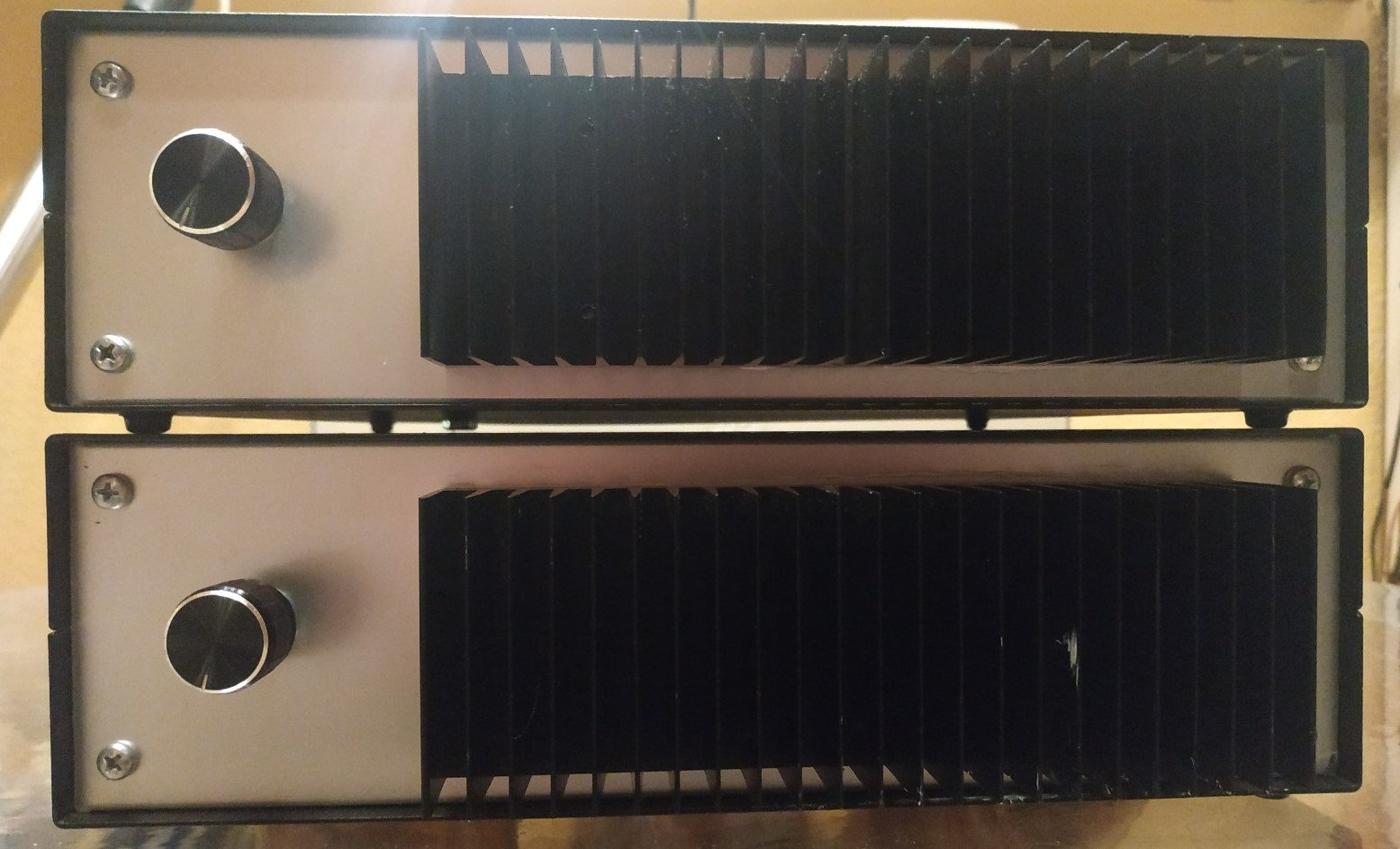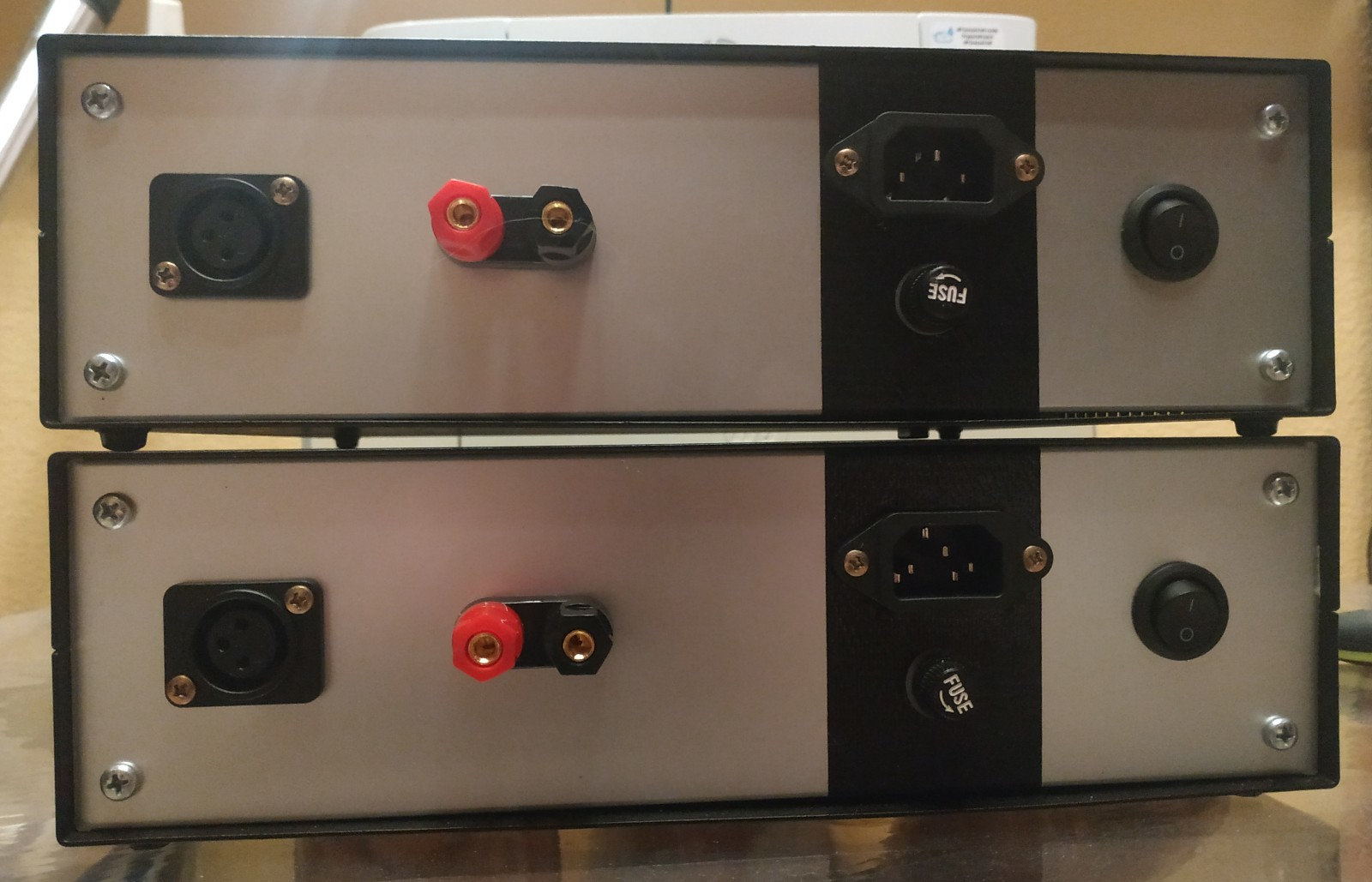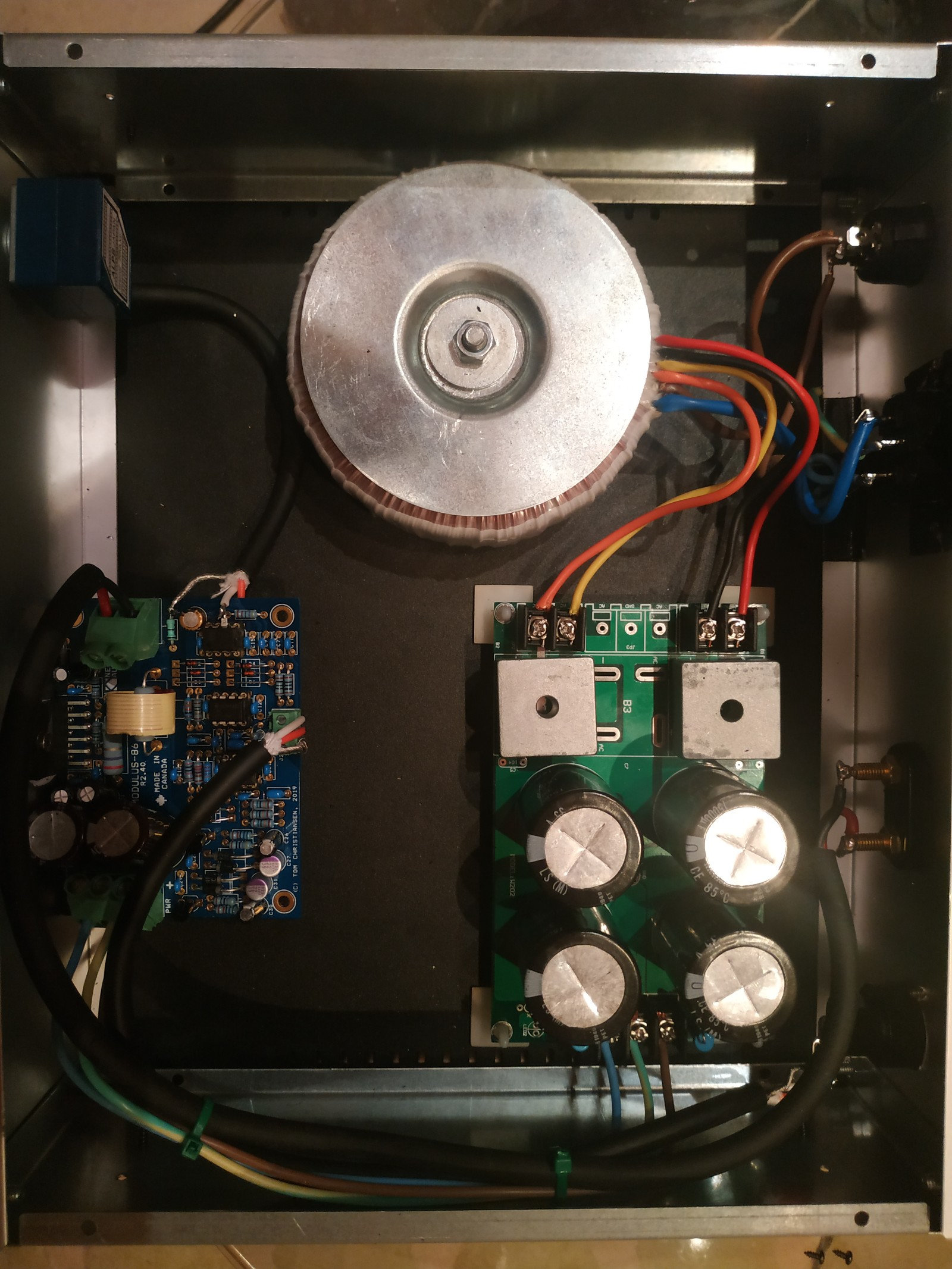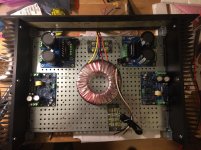Somewhere a bit back in the thread, I posted pics of my build in a repurposed commercial chassis. Quite some time later it's still playing beautifully. The compact nature of the PCBs is very helpful when recycling.
PS @Tom, yes, there is enough heatsink, they never get more than slightly warm
PS @Tom, yes, there is enough heatsink, they never get more than slightly warm
That's a neat and tidy build there. I suggest adding some heat shrink on the mains connections. I usually also cover the cable shield in heat shrink just in case the cable flops over and causes the shield to come into contact with something it shouldn't. Nicely done, though.
It's not documented in the Mean Well data sheet, but they RPS-400 do indeed turn on when power is applied. You can then turn them off by pulling their RC input to ground.
The Mean Well Control circuit implements remote sense to the board. It also allows the control of two Mean Well RPS-400 together (which is tricky when they're connected in series, actually, as their RC ground is connected to the V- output). It also implements a 12 V trigger input and allows you to use a regular momentary switch to control the power.
I think I'll discontinue the MW Control, though. It's a niche circuit and with the new Intelligent Soft Start in town, there's no need for me to keep it around. You can use the ISS to turn the Mean Well RPS-400 on/off. The ISS supports many additional features that the Mean Well Control doesn't.
Tom
Hi Tom, I was looking through your site and noticed a Mean Well control board. Do the Mean Well powers not work without them?
It's not documented in the Mean Well data sheet, but they RPS-400 do indeed turn on when power is applied. You can then turn them off by pulling their RC input to ground.
The Mean Well Control circuit implements remote sense to the board. It also allows the control of two Mean Well RPS-400 together (which is tricky when they're connected in series, actually, as their RC ground is connected to the V- output). It also implements a 12 V trigger input and allows you to use a regular momentary switch to control the power.
I think I'll discontinue the MW Control, though. It's a niche circuit and with the new Intelligent Soft Start in town, there's no need for me to keep it around. You can use the ISS to turn the Mean Well RPS-400 on/off. The ISS supports many additional features that the Mean Well Control doesn't.
Tom
That's a neat and tidy build there. I suggest adding some heat shrink on the mains connections. I usually also cover the cable shield in heat shrink just in case the cable flops over and causes the shield to come into contact with something it shouldn't. Nicely done, though.
Tom
I also saw that you participated in the finalization of the MiniDSP SHD for analog cards .... I have for a few weeks an upgraded SHD ...... what do you think?
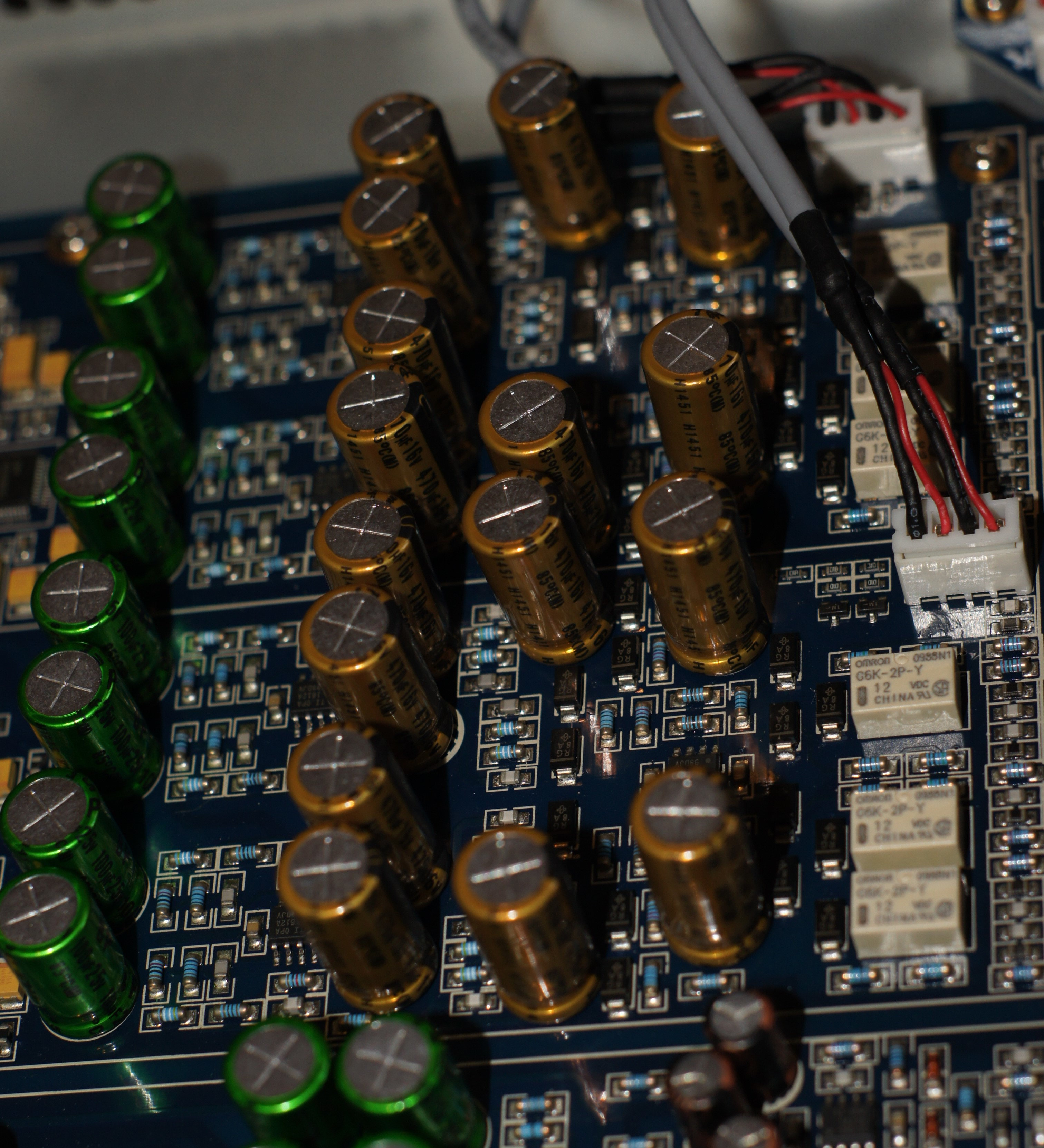
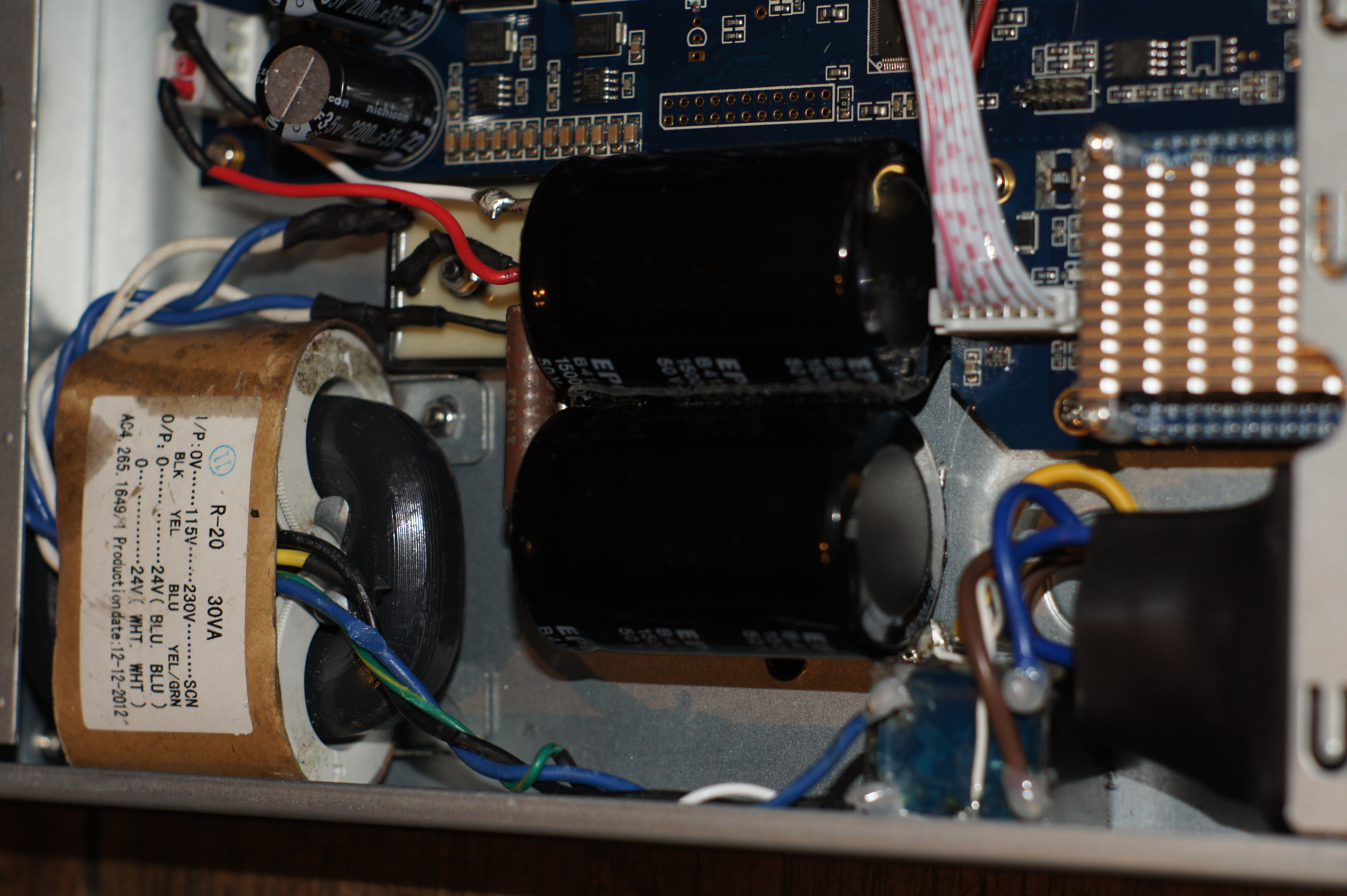
Hi Tom, Im on the last leg of my build, need some standoffs at minor items. Would this be an ok layout? Transformer primaries and seconaries will be short an in the middle of the cassis and amps placed almost in the middle for good cooling.
Attachments
Last edited:
I would probably scoot the transformer closer to the front panel so the two Power-86es can come together behind it. That will keep all the AC wiring together. You can then run the input connections to the amp along the heat sinks.
Make sure you leave enough room in the back for the IEC inlet. They tend to take up a lot of space.
Looks good otherwise, though.
Tom
Make sure you leave enough room in the back for the IEC inlet. They tend to take up a lot of space.
Looks good otherwise, though.
Tom
I had some issues with other Mean Well power supplies before. Never spent the time to sort it out. for higher voltage Mean Well power, such as 48 volt if I remember correctly, will the ISS work as well?.....
It's not documented in the Mean Well data sheet, but they RPS-400 do indeed turn on when power is applied. You can then turn them off by pulling their RC input to ground.
The Mean Well Control circuit implements remote sense to the board. It also allows the control of two Mean Well RPS-400 together (which is tricky when they're connected in series, actually, as their RC ground is connected to the V- output). It also implements a 12 V trigger input and allows you to use a regular momentary switch to control the power.
I think I'll discontinue the MW Control, though. It's a niche circuit and with the new Intelligent Soft Start in town, there's no need for me to keep it around. You can use the ISS to turn the Mean Well RPS-400 on/off. The ISS supports many additional features that the Mean Well Control doesn't.
Tom
I recall getting some voltage in in the ground causing shock.
Last edited:
Thanks Tom, I see your point.I would probably scoot the transformer closer to the front panel so the two Power-86es can come together behind it. That will keep all the AC wiring together. You can then run the input connections to the amp along the heat sinks.
Make sure you leave enough room in the back for the IEC inlet. They tend to take up a lot of space.
Looks good otherwise, though.
Tom
for higher voltage Mean Well power, such as 48 volt if I remember correctly, will the ISS work as well?
Yep. The ISS only cares about the mains voltage. It does not care what the output voltage of the SMPS is.
I recall getting some voltage in in the ground causing shock.
That sounds like something you should take up with Mean Well. I find their engineers and customer support folks pretty responsive.
Tom
It could be because of DC on the mains. That can happen when the mains voltage is distorted. It would be an even-order harmonic distortion then, but it doesn't sound good. 
Solution: Mains DC and Transformers
See fig. 8:
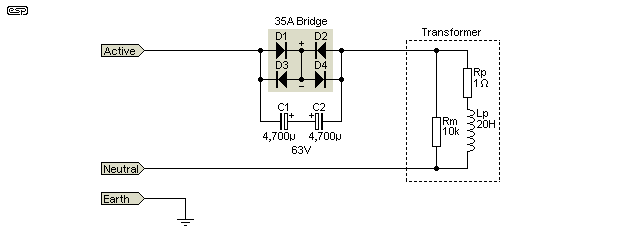
The rectifier bridge could be a KBPC3510 or KBPC2510. The caps don't need to be fancy. They should be able to handle some ripple current, though. At least as much as the expected primary current, but more is better.
Tom
Solution: Mains DC and Transformers
See fig. 8:

The rectifier bridge could be a KBPC3510 or KBPC2510. The caps don't need to be fancy. They should be able to handle some ripple current, though. At least as much as the expected primary current, but more is better.
Tom
There are, or at least were, some simple commercial products with essentially this circuit inside. I think Emotiva has/had one. The price was reasonable. It may be an option if you don't want to do the building.
I believe the Emotiva product is a very different animal: it is to safely break a ground loop while allowing shorts to conduct to safety ground. The ground loop breaker usually consists of a large bridge rectifier or a low value (around 2-10 ohms) large wattage, heat-sinked resistor inserted between signal ground and safety ground.
Tom's suggestion, by contrast, is intended to prevent "effective DC" from entering the amplifier' power supply via the AC line. Effective DC, as I understand it, can result where another load on the isle does not place demands on the hot and neutral lines, or where there is an imbalance of loads on each side of the 220 line (110+110=220). The link that Tom has provided provides a discussion of this problem, but there are other sources available on the web which discuss this issue of DC on AC power lines.
Hey everyone, I've been eyeing this thread and other Neurochrome-related threads for a while now and I'm now planning for a build of my own. I have a few questions though, which I couldn't find an answer to. Sorry if this been asked before, the search function is a little finicky.
I'm slowly building a pair of Troels Gravesen's The-Loudspeaker-III. These monsters only require 15W per channel since the subwoofer is powered by a Hypex plate-amp. Naturally, I laid my eyes on the Modulus-86. My questions are the following:
* Are there any advantage of going dual mono instead of stereo? I figured I might as well spend a little more if it brings about any worthwhile improvements.
* If there are any advantages to dual mono, does it make a difference to house it in a single enclosure as opposed to two smaller enclosures?
* A lot of the builds have seen use Modushop's chassis. Some only use internal heatsinks. I'd like to be able to design a nice looking enclosure for my amp. Does anyone have any pointers so as to get rid of the external heatsinks? To keep things looking clean, I'm not too fond of the aluminium look.
I'm slowly building a pair of Troels Gravesen's The-Loudspeaker-III. These monsters only require 15W per channel since the subwoofer is powered by a Hypex plate-amp. Naturally, I laid my eyes on the Modulus-86. My questions are the following:
* Are there any advantage of going dual mono instead of stereo? I figured I might as well spend a little more if it brings about any worthwhile improvements.
* If there are any advantages to dual mono, does it make a difference to house it in a single enclosure as opposed to two smaller enclosures?
* A lot of the builds have seen use Modushop's chassis. Some only use internal heatsinks. I'd like to be able to design a nice looking enclosure for my amp. Does anyone have any pointers so as to get rid of the external heatsinks? To keep things looking clean, I'm not too fond of the aluminium look.
If someone explain me how to insert photo, i can show you what i made .. not using aluminium case .. its kind of good looking, to my eyes
You can always upload it on imgur and post the link in here!
Imgur: The magic of the Internet
- Home
- Amplifiers
- Chip Amps
- Modulus-86 build thread
